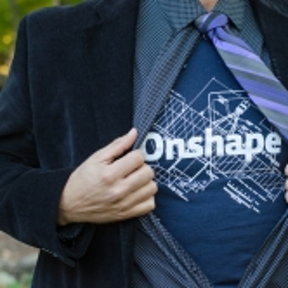Welcome to the Onshape forum! Ask questions and join in the discussions about everything Onshape.
First time visiting? Here are some places to start:- Looking for a certain topic? Check out the categories filter or use Search (upper right).
- Need support? Ask a question to our Community Support category.
- Please submit support tickets for bugs but you can request improvements in the Product Feedback category.
- Be respectful, on topic and if you see a problem, Flag it.
If you would like to contact our Community Manager personally, feel free to send a private message or an email.
Detailed gear parts affecting Onshape speed?
 michael3424
Member Posts: 751 ✭✭✭✭
michael3424
Member Posts: 751 ✭✭✭✭
I've imported some gear shapes into Onshape Part Studios and now my assembly is sluggish when I attempt to starting mating components together.
I used a program called Gearotic to specify the gear features (DP, # of teeth, and PA), exported that to a 2D DXF, imported the DXF into GeoMagic, to extrude the basic gear shape, exported the extrusion to STEP format and then uploaded that to OnShape, translated it and then did some minor revisions on the gears. It looks like the gear generator produce a DXF file with tons of facets, so I'm assuming that is the source of the slowdown. Does that make sense?
I've publicly shared a file with several of the gears in case anyone wants to take a look.
https://cad.onshape.com/documents/d3982d7a402e4578914f86f7/w/8778fb8636b344ee94b4b4ad/e/cec50dfdff994b62817e0be9
Mike
I used a program called Gearotic to specify the gear features (DP, # of teeth, and PA), exported that to a 2D DXF, imported the DXF into GeoMagic, to extrude the basic gear shape, exported the extrusion to STEP format and then uploaded that to OnShape, translated it and then did some minor revisions on the gears. It looks like the gear generator produce a DXF file with tons of facets, so I'm assuming that is the source of the slowdown. Does that make sense?
I've publicly shared a file with several of the gears in case anyone wants to take a look.
https://cad.onshape.com/documents/d3982d7a402e4578914f86f7/w/8778fb8636b344ee94b4b4ad/e/cec50dfdff994b62817e0be9
Mike
0
Best Answer
-
 pete_yodis
OS Professional, Mentor Posts: 666 ✭✭✭
pete_yodis
OS Professional, Mentor Posts: 666 ✭✭✭
@Michael3424 I suspect the problem lies in the approximation of the involute curve on the gear tooth flanks. I used to generate 2D geometry in AutoCAD back in the day and then import it into SolidWorks and extrude to get a gear in 3D. I would get a similar slow down in SolidWorks on large gears (lots of teeth) with a large amount of surfaces. You are probably seeing a slow down because of the graphics burden happening when location and display of all those surfaces have to be handled. I would try to have the gear tooth flank be all one spline that approximates the involute curve, rather than a series of segments. This should do it.Michael3424 said:I've imported some gear shapes into Onshape Part Studios and now my assembly is sluggish when I attempt to starting mating components together.
I used a program called Gearotic to specify the gear features (DP, # of teeth, and PA), exported that to a 2D DXF, imported the DXF into GeoMagic, to extrude the basic gear shape, exported the extrusion to STEP format and then uploaded that to OnShape, translated it and then did some minor revisions on the gears. It looks like the gear generator produce a DXF file with tons of facets, so I'm assuming that is the source of the slowdown. Does that make sense?
I've publicly shared a file with several of the gears in case anyone wants to take a look.
https://cad.onshape.com/documents/d3982d7a402e4578914f86f7/w/8778fb8636b344ee94b4b4ad/e/cec50dfdff994b62817e0be9
Mike
5
Answers
Actually quite quick once you know the steps and results in 3 faces per tooth (5 including the fillets). which is quite manageable for me in terms of speed to mate etc.
I used this tutorial with the exception of the equations. Worked well you can see my resultant model here.
Not a direct solution to your problem maybe but an alternative way of doing things.
Shep
Nice model of the Elmer's engine by the way - have you built it?. I have his book and my present Onshape project is a model of an 1867 Otto-Langen IC engine, which I'd like to build.
Mike
I needed accurate gears that were a bit unusual: 14.5 degree, 0.6 module, stub tooth, for a prototype power tool and could not get them other than 3D printing (3D printed with a dental/jeweler's wax then investment cast in 17-7 stainless). The solid models were perfect. Without that the 3D printed parts would not have been possible. Because of it I have a functioning prototype, not one that is just representative of the shape and appearance.
This is just one example of why I am particularly anxious for OnShape to provide the equivalence of SolidWorks' a) configurations, b) Design Table, c) equations, d) link to a spreadsheet. Once this can be done in OnShape I would share the parametric file.